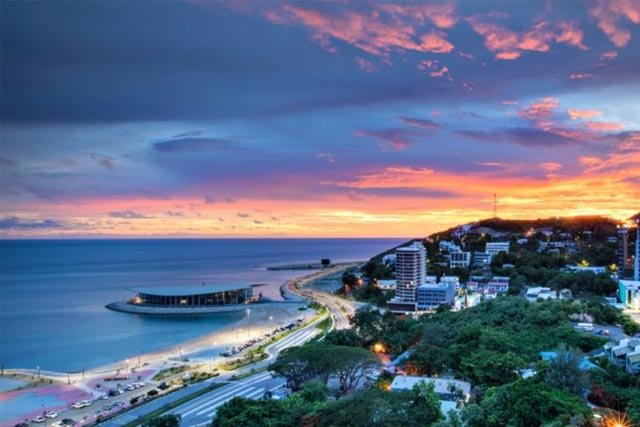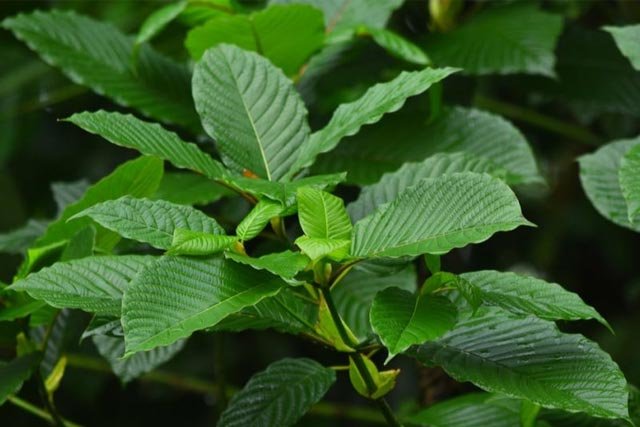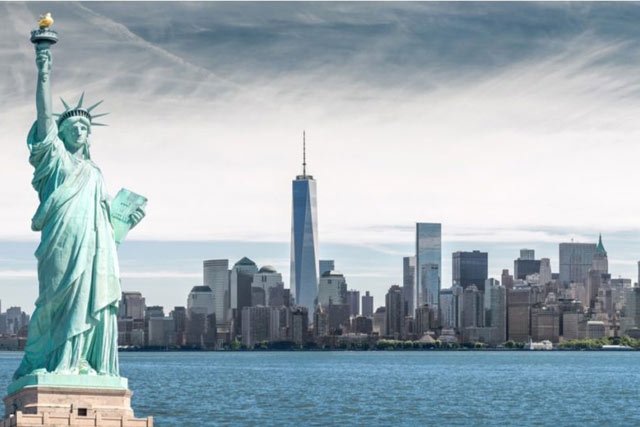Kratom is grown in Southeast Asia, so it’s crucial you carefully choose your vendor.
People mainly grow Kratom (Mitragyna speciosa) in Indonesia, Thailand, and Malaysia. Kratom, a tropical evergreen tree native to Southeast Asia – where people sometimes call it ‘Biak-Biak’ – has been cultivated in the region for centuries.
In this post, we will be exploring the world’s kratom hotbeds, looking at how location and growing conditions can impact a strain’s effects, and showing you how to grow kratom. Let’s get started!
Where Are The Most Common Places Kratom is Grown?
| INDONESIA | MALAYSIA | THAILAND | MYANMAR | PAPUA NEW GUINEA |
| Indo | Malay | Thai | Papua | |
| Bali | Borneo | Maeng Da | ||
| Sumatra | ||||
Kratom, which people in Southeast Asia have been using for hundreds of years, serves various purposes, such as pain relief, relaxation, and stimulation.
Laborers working hard, physical jobs in brutal swampy, jungle conditions often chew kratom leaves for energizing effects. Kratom also has a long history of use in religious ceremonies.
Indonesia

Kratom grows throughout Indonesia, a country made up of thousands of islands with a population of over 270 million. Indonesians have used kratom for health and well-being purposes for centuries.
The kratom tree holds high importance for the many indigenous ethnic groups living there.
Indonesia cultivates more kratom than anywhere else and grows several of the world’s best-known strains. You’ve probably heard of Indo, Bali, and Sumatra kratom.
Since nearly three-quarters of Borneo belongs to Indonesia, you could also classify Borneo kratom as an Indonesian strain. Other famous Indonesian kratom strains include Ketapang, Sandai, and Hulu Kapuas.
Ketapang kratom originates from the region of West Kalimantan, near Borneo, simply referring to the region where the kratom is grown.
Sumatra kratom is from the island of Sumatra, and so on. We’ll touch more later on how location may influence effects.
But kratom faces an uncertain future in Indonesia, with lawmakers set to make it an illegal substance from January 2022. This is alarming news. With Indonesia out of the market, much of the world’s kratom supply would dry up overnight.
But regional governments in Indonesia are not going down without a fight. The Kapuas Hulu Regency has announced it will not enforce a ban since kratom is a crucial cash crop for many farmers in rural areas.
The American Kratom Association has claimed that the Food and Drug Administration (FDA) and the Drug Enforcement Administration (DEA) are pushing Indonesian officials to ban kratom exports.
These federal agencies have failed to crack down on kratom in the US – an Indonesian export ban would be a way of doing so via the backdoor.
Outlawing kratom would be bad for the Indonesian economy and devastating for kratom lovers around the globe. Let’s hope it doesn’t happen.
Malaysia

Malaysia shares a border with Indonesia and is another substantial kratom exporter. Perhaps you’ve had a delightfully balancing Malay strain before – no surprise that Malay kratom is from Malaysia! Malaysia also controls a small section of Borneo.
The conditions for growing kratom are just perfect in Malaysia. The hot, humid weather and fertile soil deliver excellent yields for farmers and high potency for users. The climate allows kratom trees to grow to heights of 60 feet or more!
Technically, Malaysia has banned kratom consumption and exports, but the reality is much different. For usage, the laws are not well-regulated or enforced, and kratom remains popular among the locals.
As long as the leaves remain unprocessed, exporters can still send them, ensuring they maintain the same condition as when picked.
Malaysia considered imposing stricter laws in 2015 before deciding the current law was good enough. Farmers in Malaysia must have a license from the government to cultivate kratom.
Thailand

Kratom also has a long history in Thailand, where the industry could be about to experience tremendous growth. In 2022, the Thai government legalized kratom. I find that a unique and inspiring achievement, given other Southeast Asian countries are trying to ban it!
Thailand’s newly relaxed approach to kratom comes after decades of failing to restrict it. Kratom is just as famous, both as a soothing painkiller and as a power-packed stimulant. No government efforts were going to be successful in getting the Thai people to give up on kratom.
Famous Thai strains include White Thai, a super stimulant, and the outrageously potent Maeng Da. The Thai people have a great sense of humor – did you know that Maeng Da stands for ‘pimp-grade’? That’s the Thai way of describing Maeng Da’s mighty potency.
Myanmar

Although Myanmar (aka Burma) also grows kratom, they don’t produce anywhere near as much as Indonesia and Thailand. Kratom is indigenous to Myanmar, although sadly illegal.
But kratom is still a big deal there, with drug seizures on the rise. Despite being banned, kratom is still prevalent everywhere, just like in other countries in the area.
Papua New Guinea

Papua New Guinea (PNG) is yet another Southeast Asian nation where kratom is destined to succeed. Kratom trees love heat and humidity, and they get plenty of that in PNG. The soil conditions are perfect, with a pH between 5.5 and 6.5.
Compared with its neighbors, PNG doesn’t grow much kratom yet. But that could all change shortly. While other countries are banning kratom, PNG imposes no such restrictions.
Kratom could be a very lucrative cash crop for farmers in PNG – even more so in a market with shrinking supply and sky-high demand.
How Does The Location Affect Kratom?

If you’re familiar with kratom, you’ll know there can be some pretty significant differences between strains. The vein of a strain (red, white, or green) plays a key role, but even two strains with the same vein can produce quite different effects.
The growing location and conditions do have an impact, but the manufacturing process is probably more important. Let’s discuss.
Thai strains energize, Bali strains relax, and Malay strains achieve beautiful balance. Its alkaloid makeup determines the characteristics of a kratom strain.
Mitragynine and 7-hydroxy mitragynine have the most significant effects, but other alkaloids can influence strains, too. For example, Thai strains are rich in mitraphylline, an alkaloid known for its stimulating properties.
For example, Bali kratom probably has a higher mitragynine content than most strains since it’s very sedative and opioid-like.
But it’s difficult to know for sure. We have very little research on the chemical nuances of kratom strains. There’s a lot we don’t know about growing conditions, too.
The kratom farms across Southeast Asia are cultivating different types of kratom. Slight climate differences between regions may affect what type of kratom grows.
Processing methods have a more significant impact on kratom’s effects. Take Maeng Da, for example. The so-called ‘pimp-grade’ kratom is extremely strong, but the extra strength is explained by how it’s manufactured.
Maeng Da is a hybrid kratom. The genetic characteristics of two or more strains are merged to make this highly potent strain. Not even a perfect climate could produce kratom that strong.
Can I Grow Kratom in The US?

Kratom is tricky to grow, but you can cultivate it in much of the United States. With Southeast Asian countries exploring growing and export bans, this question has never been more relevant.
Where kratom is legal in the US, there do not appear to be any restrictions on how much you can grow. The challenges have more to do with climate and conditions than legal implications.
Kratom is legal at the federal level. However, a handful of states, counties, cities, and towns across the United States have banned it. You are not allowed to grow kratom in the following locations:
States: Alabama, Arkansas, Indiana, Rhode Island, Vermont, Wisconsin
Cities: Franklin (New Hampshire), San Diego (California), Oceanside (California)
Counties: Sarasota County (Florida), Alcorn County (Mississippi), Itawamba County (Mississippi), Lowndes County (Mississippi), Monroe County (Mississippi), Tishomingo County (Mississippi), Union County (Mississippi)
Towns: Monument Town (Colorado), Parker Town (Colorado)
But providing you don’t live in any of these areas, you are perfectly within your rights to grow kratom in the US.


